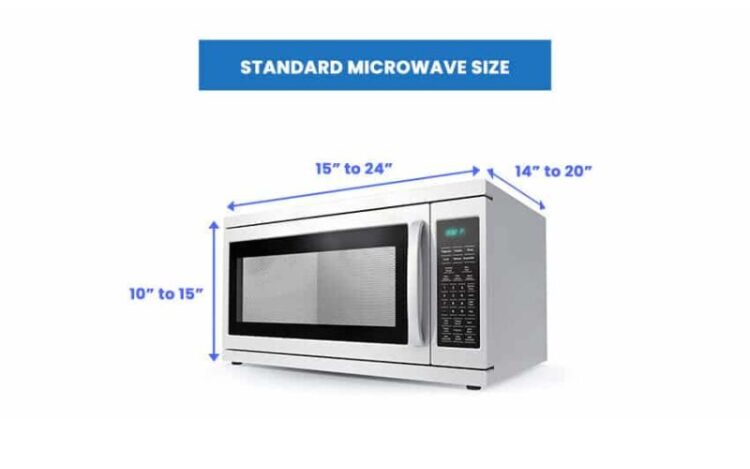What is Measuring a Microwave
Although it may seem trivial, measuring your microwave is crucial to making sure it fits in with the rest of your kitchen equipment and your cooking routine. Knowing the microwave’s capacity is just as important as knowing its size when it comes to making the most of your cooking time. Here we’ll go into the subject of microwave measurement, discussing its importance and the ways in which it might improve your cooking.
Types of Microwaves
Understanding the many microwaves on the market is a prerequisite to delving into the nuances of measurement. The four most common are:
Microwaves that fit on a kitchen counter are the most popular and flexible option. They’re light and convenient enough to move around on your counter top.
Microwaves that are installed over the range are commonly referred to as OTR microwaves. They’re multifunctional in that they can be used as either a microwave or a range hood.
Built-in microwaves are a sleek and space-saving option because they blend in with your kitchen cabinetry.
Microwaves with a drawer-like opening can be concealed in cabinetry or built into a kitchen island.
Benefits of Knowing How to Measure a Microwave
There are many advantages to knowing your microwave’s dimensions and capacity.
In order to make the most of the space in your kitchen, it is helpful to know the dimensions of your microwave.
Convenience in the Kitchen: Precise dimensions let you pick out the ideal dishes and utensils, streamlining your meal preparation.
When planning meals, knowing how much food your microwave can hold is helpful for both cooking efficiently and keeping portions in check.
Know the dimensions of your new or replacement microwave to make sure it will fit in your current cabinetry and counter space.
Step-by-Step Process of Measuring a Microwave
Determine the Exterior Dimension
You should start by taking external measurements of your microwave. Just do what I say:
Make sure your microwave is sitting on a level surface.
Take accurate dimensions of the microwave by using a ruler or tape measure. Be sure to take your measurements from the broadest parts, such as the handles or prongs.
Measure the interior’s width and depth.
When shopping for storage containers and pots, knowing the internal dimensions is crucial. This is accomplished by:
Measure the inside cavity’s width and depth by opening the microwave’s door. The walls and turntable of the microwave should be considered as potential obstacles.
Determine the Cubic Footage or Capacity of your Microwave
Let’s figure just how much space your microwave actually has. The amount of food it can hold is directly proportional to this dimension:
To determine the volume, simply multiply the interior’s width, depth, and height.
To convert to cubic feet, take the answer and divide it by 1,728 (the number of cubic inches in a foot).
Tips for Accurately Measuring your Microwave
Use a trusted measuring tape or ruler to guarantee accurate results.
Measure both the outside and interior dimensions to account for any deviations.
Do not forget to factor in any outside features that stick out, such as door handles or buttons.
Verify the accuracy of your calculations to ensure you have the correct volume or storage capacity.
Conclusion
Here, we’ve covered all you need to know to measure your microwave correctly, from its external measurements to its internal width and depth to its cubic footage or capacity. With this information in hand, you’ll be able to select cookware, prepare meals, and make other culinary decisions with confidence, all while making the most of your microwave.
Benefits Gained From Doing this Exercise
Measuring your microwave can help you better organize your kitchen, make better use of your space, and have more enjoyable cooking experiences. Knowing the size and capacity of your microwave is an important skill that can improve your cooking and save you time in the kitchen, regardless of how much experience you have in the kitchen. Get out your measuring tape, because you’re about to become a microwave measurement expert.

